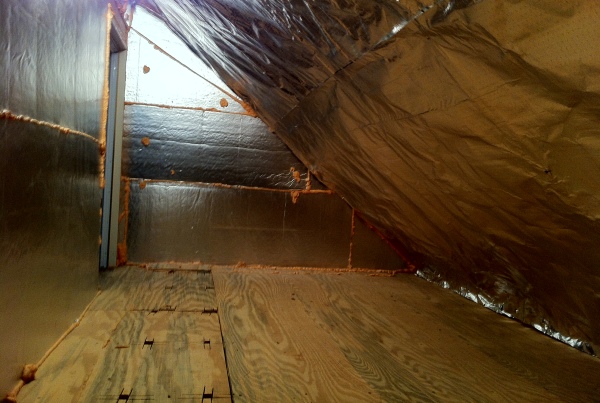There’s a huge amount of money to be made in convincing home and business owners that their windows are horribly wasteful and in dire need of replacement. HUGE!
The collateral damage of this sales tactic is that, now, everyone without twenty grand to spend on this year’s Super-Vinyl-Low-E-Ultimate-Replacement-Windows thinks themselves left out in the cold (or the heat, as it were) when it comes to energy conservation. And that’s just not true.
There’s absolutely no question, modern replacement windows are more energy efficient than their older siblings. But the green movement is about much more than tightly sealed houses. For the first time ever, we’re being asked to consider the life cycles of the materials that go into our homes and the ultimate destination of the materials that come out. When you consider all the plastic and aluminum that goes into your new windows, the resources used to get them made and delivered to your house, and the quantity of materials that will likely end up in the landfill from the removal of your old windows, the equation isn’t so obvious. Perhaps it’s a more environmentally friendly option to use the windows you have, with a few improvements.
Now, here’s the secret your friendly window seller doesn’t want you to know… Very little heated or cooled air is lost through the window pane itself. The real problem is air leaking around the sashes and the trim. And these leaks can be stopped for much less than the cost of replacement windows.
Caulk and weatherstripping can save you thousands of dollars in energy costs, prevent your local landfill from clogging up with your renovation waste, and prevent tons of carbon being released into our fragile atmosphere.
To see if you need to seal your windows, hold a lit incense stick close to them on a windy day. The smoke will either move toward or away from the source of infiltration. If the smoke moves, you’re leaky.
The absolute best thing you can do to stop the leaks is to remove the casing and fill the gap with expanding foam insulation. But that job is dirty, difficult and time consuming. A more approachable solution for the “weekend warrior” is to caulk around the casing where it joins the wall and the window, inside and out. A clear, acrylic-latex caulk is the best choice for the job because it dries almost invisible and is paintable. Silicone, while more durable and effective, will not take paint. Some vendors are now selling a “siliconized” latex caulk and, as long as the label says it’s paintable, it should work fine.
The next step is to replace (or place) weatherstripping in all the places where air can pass around or between the window sashes. What kind of weather stripping is dependant on what kind of window you have so that issue can’t be addressed in this short guide. But, it should be said, metal is better than foam.
While you’re at it, check the weatherstripping around your doors. If a flashlight can be seen through the closed door, you’re leaking there, too. And, while you have it out, caulk those casings as well.
One way or another, don’t let sales blather make you think there’s nothing you can do to help prevent global warming, short of spending a small fortune on retrofit improvements.
And sleep well knowing you’re doing your part to preserve this delicate planet for your children. And mine.
Free Attic & Crawl Space Inspections
Learn More




